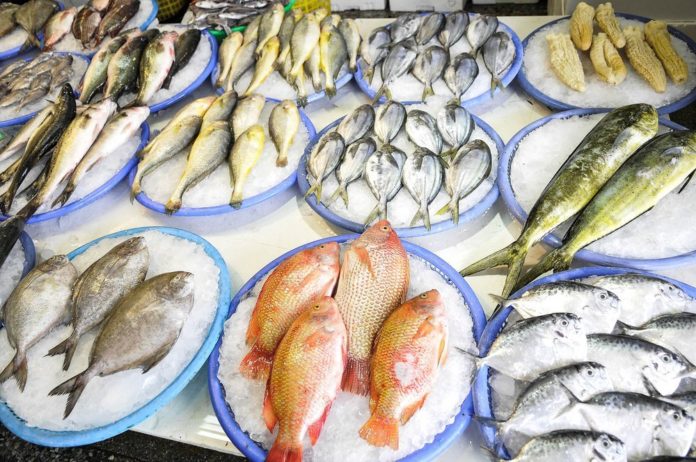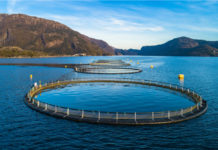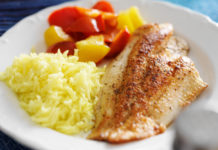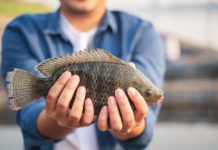Sourcing sustainable seafood in a landlocked state doesn’t need to be complicated. Regardless of where you buy your fish—at a restaurant, from the grocery store or straight from a supplier—there are plenty of ways to find sustainable seafood.
Smart Shopping
Actively seek out sustainable seafood choices using Fish Choice’s Seafood Buying Guides, which are specifically designed to help educate consumers on seafood information “related to conservation, procurement and culinary qualities.” These guides provide a wealth of information including seasonal availability, nutritional information, and a sustainability summary with ratings from organizations like Ocean Wise. You can also use this guide when dining out, as not many restaurants go out of their way to include sustainability information on their menus.
Farmed Seafood

Technology advancements, especially in air transportation, have made it easier for suppliers to send wild-caught, fresh, never frozen fish directly to customers in landlocked states. However, that’s not the only way to get fresh seafood. For those that live in landlocked states, fish farms can be a great alternative to flying in wild-caught fish, which can be more expensive and more damaging to the environment as it causes a large carbon footprint. Because fish farms can be strategically located near landlocked cities, less transportation is required to get from farm to market and market to table.
Flash-Frozen Fish
There is a perception among consumers that frozen seafood is not a sustainable choice. Not only is this false, it can actually be better quality than fresh depending on where it was sourced from. If fish is handled properly and immediately flash-frozen after being caught, freshness is preserved. These days, most fish and some shellfish like crabs, are frozen right at sea. Take, for example, Regal Springs Frozen Tilapia Loins. These lake-grown Tilapia are raised on primarily vegetable-based feed in the most environmentally friendly way. Use the “where to buy” map on Regal Springs’ website to find a grocery store carrying their Frozen Tilapia Loins near you. And for those new to purchasing frozen seafood, take a look at the National Fisheries Institute’s seafood storage guide to how long you can safely store your new purchase.
Local Fishing

Don’t forget that there are plenty of fish available in local lakes and rivers near you. Depending on your location and the season, local may be the most sustainable choice for most landlocked consumers. For example, rainbow trout found in lakes and streams is a top sustainable choice for most of North America. In many places, it can be fished recreationally year-round. Rainbow trout have a mild flavor and can be cooked using a variety of methods. Try this pan-fried Trout with Rosemary, Lemon and Capers recipe made in under 20 minutes.
Wild fish populations are declining as demand for seafood grows, so making sustainable seafood choices is important to help minimize the negative environmental impact on our oceans, lakes and rivers in the future.
Want to add more fish and seafood to your diet? Here are seven reasons why you should eat more seafood. And if you’re still not sure about farmed fish, learn more about its nutritional benefits.
Photo Credits: Susii / Shutterstock Inc., Prasit Rodphan / Shutterstock Inc., Cooking NY Times






